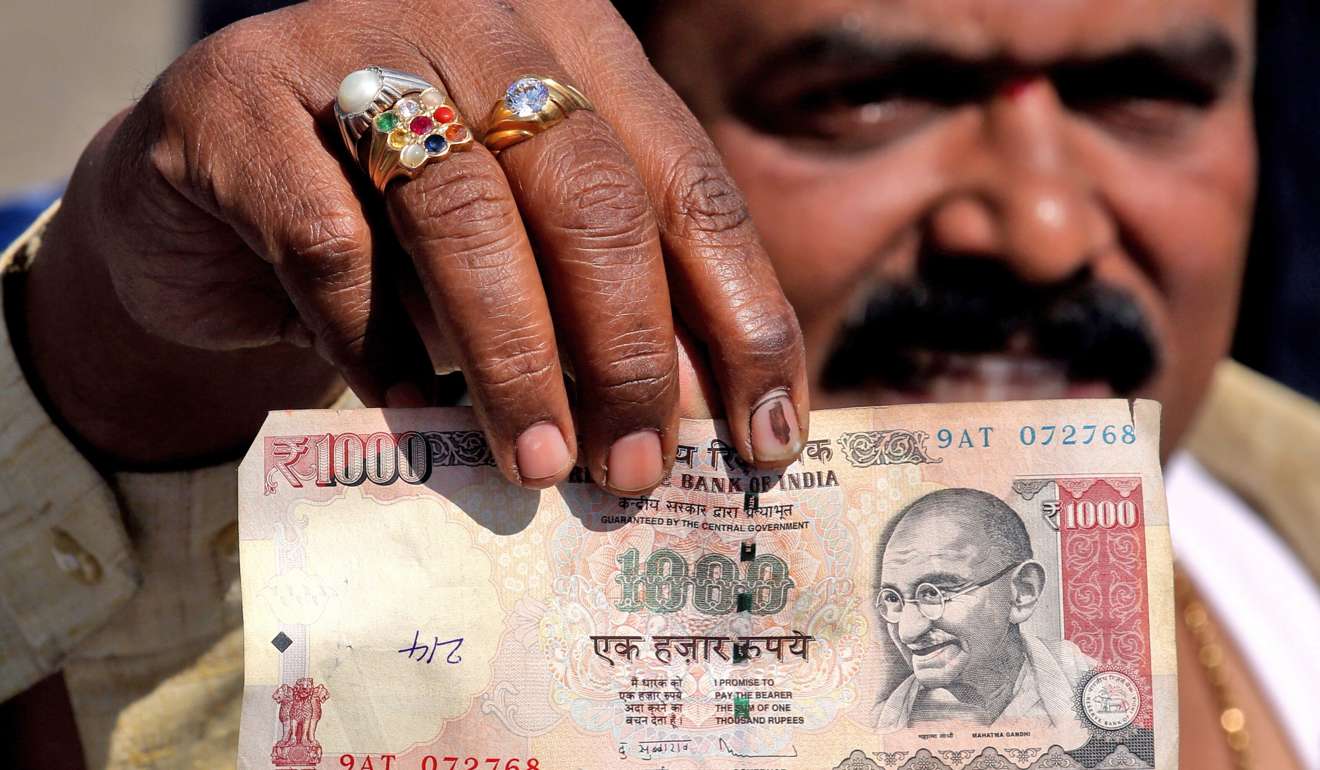
Asia ‘not turning in on itself’, says State Bank of India chief
Bhattacharya says demonetisation wasn’t easy for India’s banking system, but it has provided a boost to the necessary process of digitisation
While other parts of the world may be turning inward, Asia was not, according to Arundhati Bhattacharya, chairwoman of the State Bank of India.
In an interview with the South China Morning Post, she said she wants to see more trade between China and India and hopes the bank will expand its activities in mainland China.
However, Bhattacharya was less forthcoming when it came to the question of whether and in what way India would be involved in China’s One Belt, One Road initiative, which is proving controversial in the world’s largest democracy.
“I can’t tell you precisely how much participation there will be from India in the One Belt, One Road, but what is clear is the understanding that it is important for us to develop neighbourhood trade. In that, there is no wide divergence between what is being proposed by China and where India is,” Bhattacharya said.
She added that there needed to be more balanced trade between the two nations as the current balance of trade was very much in China’s favour.
There have been ongoing tensions between Asia’s two most populous countries with the belt and road initiative proving controversial in many quarters.
I think India might be the first major battleground for Chinese and US fintech companies
“The Indian security services are worried about the One Belt, One Road, particularly when it comes to China’s relationship with Pakistan, while the business world is concerned that the project will make it harder for them to compete with Chinese companies both in India itself and in third countries like Sri Lanka or Bangladesh,” said Jean-Marc Blanchard, Shanghai-based executive director of the Mr & Mrs S.H. Wong Centre for the Study of Multinational Corporations.
Nonetheless, at a time when protectionism and national self interest are becoming drivers of government activities elsewhere in the world, Bhattacharya strongly rejected the suggestion that such tendencies were at play in Asia.
“I don’t think that is the case with India or China,” she said. “This neighbourhood, at least, is not turning in on itself.”
Bhattacharya said that she hoped to see greater activity by Indian services or software companies in China to help rebalance the trade relationship between to the two countries, and also welcomed the level of Chinese investment in India.
“There is potential for more Chinese investment in India’s infrastructure, and there are already Chinese investors in India’s power and telecoms sector, as well as the banking and payments space,” she said.
Post owner Alibaba Group, for example, is a major investor in India’s most popular digital wallet, Paytm.
This area of investment is also an interesting challenge for Chinese companies as they go abroad.
“I think India might be the first major battleground for Chinese and US fintech companies,” said James Lloyd, EY’s fintech leader in Asia Pacific. “Alibaba is very active in India, but so too is Amazon.
Digitisation of financial services has also been a topic at the forefront of Bhattacharya’s mind in recent months, given India’s sudden demonetisation.
On November 8 , the Indian government announced the withdrawal of all 500 and 1,000 rupee notes, which accounted for about 86 per cent of all banknotes in circulation by value, in an attempt to reduce corruption and increase the amount of on-the-books cash that can be taxed. An added factor was the boost that this would provide to digitisation of finance, with many Indian consumers beginning to use credit cards or mobile wallets.
“In the sixty days of demonetisation, the number of people who were activated to use debit cards was 400 per cent of what had been achieved in the last three years,” said Bhattacharya.
“This is necessary as we can’t bring people into the ‘financially included’ space if we don’t go digital as we are too populous. It is too expensive to have a bricks and mortar presence everywhere.”

“There’s no doubt that there is huge potential for financial technology in India, and the government has done a lot of work to build the necessary infrastructure,” said Lloyd.
“Some uncertainty remains though about the speed of progress and when the fintech companies using this infrastructure will turn a profit.”
Despite the boost that India’s demonetisation provided to digitisation, Bhattacharya acknowledged that there had been challenges.
“It has not been easy for the banking system. Neither for the opening of all the accounts, nor the huge rush that we had to handle when people came to hand in their notes, and then again with remonetisation. But in the long run it will be worth it.
“I think the media have not given enough credit for the fact that all this took place in a hugely populous country without any significant law and order issues, and people welcomed the attempt to stamp out corruption.”
Bhattacharya did acknowledge that there were also losers from the process. “People of lower means who sell perishable goods bore the brunt of the change, as they had to sell their goods cheaply because of the little cash in the system,” she said.

